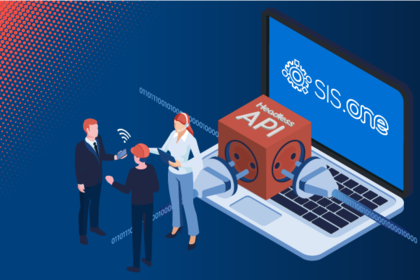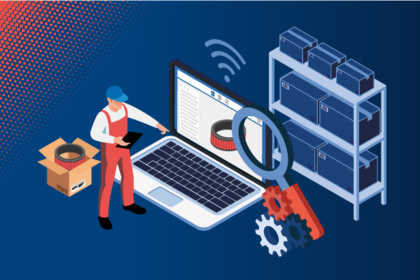5 Tips for more Revenue with Spare Parts and Services
In the case of investment-intensive goods, the aftersales department usually makes a significant contribution to revenue. But the competition never sleeps and the battle for customers in the spare parts business is fierce. What should you do as a machine and plant manufacturer when your sales of spare parts and services stagnate? Read our 5 tips on how you can boost your spare parts business and increase your aftermarket sales.
#1 Build up a team for the sale of services
The distribution and marketing of spare parts and services are often neglected. However, there is a great potential to increase your turnover in the aftersales sector.
Reality often looks like this: Sales staff are only entrusted with the sale of primary products or have a greater incentive to sell primary products, which generate higher commissions than the sale of services. The service department often has more contact with existing customers than the sales team but does not consider the sale of services or the passing on of sales opportunities to the sales department as its responsibility.
Analyze your organizational structures and identify the levers you can turn. Also consider your customer structure: Do your customers usually have their own maintenance department? How price sensitive are your customers? What percentage of your customers have already signed maintenance contracts? Depending on your results, it may be worthwhile to set up your own service sales team or create incentives for the existing sales department to additionally sell services and parts.
#2 Use service technicians as a retail channel
Another sales potential can be found in your service technicians. They often have a good insight into the demand situation and, due to their professional competence, a high acceptance by the customers. Here too, it can be worthwhile to develop a suitable incentive strategy. However, it is important to consider the fine line between the actual task of the service technician (repairing or maintaining a machine) and the sale of additional services or maintenance contracts. A low hanging fruit, for example, is making sure that none of your service technicians go to a customer without carrying information material, such as brochures, flyers or digital information on the tablet about your services and parts. This provides the necessary guidance when needed and helps during on-site discussions.
Think about offering training and workshops for your service technicians on the topics of dealing with customers and sales promotion. In this way, they can be better trained to identify needs and sales opportunities. The goal does not have to be to train your service technicians to become fully-fledged sales staff. However, they could become brand ambassadors who convince through their professional competence.
#3 Simplify the process for ordering spare parts
Your customer's machine is defective and must be repaired as soon as possible. Your customer does not want to lose valuable time and wants to reduce downtimes to a minimum. What possibilities do you offer him to identify and order the required spare parts? Is there possibly still potential for optimization?
Please consider the following rules:
- The identification of spare parts must be as simple as possible.
- Ordering must be quick and easy – anywhere, anytime.
- Order processing must be fast, reliable and correct.
The better you implement these three rules, the more satisfied your customers will be and the higher the chance that your customers will order from you again in the future and not turn to your competitors.
A service information system with a self-service portal can help
In a digital spare parts catalog or service information system, your customer can easily identify the right spare part and obtain the relevant information from maintenance and operating manuals or other technical documentation directly linked to the part in question. Using 3D or 2D visualizations, an extensive text search or a QR code attached to the machine, your customer can quickly and easily identify which part is needed. Via the online portal, your customer can order the required part thanks to the shopping cart function and e-commerce integration - anywhere, anytime. How? With Quanos InfoTwin.
#4 Check your prices for spare parts and services regularly
The sale of spare and wear parts is a lucrative area for many machine and plant manufacturers due to the comparatively high margins. Unfortunately, also a very competitive one. For this reason, you should regularly check your prices for spare and wear parts as well as for services and maintenance and readjust them if necessary.
When analyzing your prices for spare and wear parts, consider the following aspects:
- How high is the competition for this part?
- What damage will the failure of this part cause?
Furthermore, experience and market data should be considered, which can vary from industry to industry.
If your analysis shows that there is still room for price increases for some parts, it is important to consider how often these parts are sold or how much they are in the focus of your customers. Frequently sold parts are usually under special observation of your customers. A price increase should be made gradually and not all at once. For parts that are sold less frequently, it may be easier to implement the price increase.
It is recommendable to offer some of the parts under special observation permanently at a favorable price compared to the competition. This will lead to your customers considering your prices as fair overall and may result in an overshoot on other - more expensive - parts.
It is also common to adjust prices according to customer segment. A customer who has bought an expensive machine from you usually has high demands on functionality and performance. This customer will be more willing to buy more expensive (original) spare parts than a buyer of a cheaper machine.
Overall, your pricing should be logical and comprehensible to the customer. If this is not the case, it can quickly lead to displeasure and confusion.
Also, with regard to your service costs, check whether the current hourly rate is still appropriate. A higher price can make your services appear more valuable, provided the service is of correspondingly high quality and the price is in line with the market.
#5 Offer packages & maintenance kits and ensure easy re-order
Regular maintenance and the replacement of wearing parts are a daily occurrence in the operation of machines, systems and equipment. No wonder, because contact with rubbing or abrasive materials has an effect: wear and tear.
Make things easy for your customers, service technicians and maintenance staff by offering packages or maintenance kits for wear parts that should be replaced frequently. Communicate these maintenance kits in a special area on your website or online portal. Maintenance instructions on the machine can easily be supplemented with the order number of the corresponding maintenance kit.
Think about which wear parts and the corresponding machines/devices could be relevant for automated reordering. Perhaps you could also develop some sort of subscription offer where you automatically send the required wear parts to your customers at a pre-determined cycle?
The advantages: You create added value for your customers and at the same time ensure that all required parts are actually replaced. In addition, you have the opportunity to sell the customers parts that they might otherwise have purchased elsewhere. The result: higher customer satisfaction and increased sales.
Summary: There is great Revenue Growth Potential in After Sales
To sum up, there are several levers in the aftersales sector that can lead to an increase in sales, but these levers vary from company to company. However, the ultimate goal should always be high customer satisfaction and the establishment of long-term customer relationships.
Our Success Stories
Read how Schlatter Industries AG was able to secure competitive advantages by implementing an innovative e-shop with integrated spare parts catalogs and thus generate more sales in the spare parts business. Read case study





